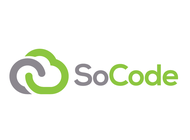The future of neuromodulation
Life Sciences
- Date 13 Aug 2015
- Sectors Life Sciences
Why the industry needs to shift to high-volume, low-cost, disease-management solutions
The company says demand for mass-market therapies for chronic ‘lifestyle’ conditions such as obesity, migraine and incontinence will drive a new approach to neuromodulation. Individuals with lifestyle conditions will not accept complex, high-risk surgery. And payers – health services, insurance companies or individuals – are unlikely to bear the high cost of traditional implant procedures. Simpler, lower-cost options will be enabled by smart delivery devices combined with miniaturised implants.
“Growth in the neuromodulation market is plateauing due to the cost pressures and the need to move away from the $30,000 implant to gain market share,” said Vaishali Kamat, head of digital health at Cambridge Consultants. “The business model and approach to neuromodulation needs to shift from the current low-volume, high-cost, place-and-forget product to a high-volume, low-cost, disease-management solution.”
Neuromodulation is an established treatment for conditions such as chronic pain and epilepsy. But advances in technology and clinical knowledge are making it possible to treat a wide range of lifestyle conditions – and improve the quality of life for millions of patients.
Neuromodulation directly influences the body’s regulation systems by applying electrical signals to target nerves – relieving patients of pain, drugs and accompanying side effects. But today’s devices are generally large – requiring large ‘pockets’ within the body where they can be stored. The need for internal batteries and long leads compromises the longevity of the implants – with repeat surgery required to replace batteries, and reposition or replace leads. And they are open-loop, place-and-forget devices, offering little or no ability to respond to dynamic patient conditions.
Improved through-body wireless technologies are now allowing control – and even power – to be brought out of the implant and delivered directly from outside the body through separate control devices. System-on-a-chip technology has the potential to reduce a ‘hockey puck’ device to a single chip, complete with electrodes on board for direct connection to the nerve. And closed-loop devices of the future will use advanced biosensors to both monitor and treat – responding to fluctuations in a patient’s condition or even their activity and location.
“Consumer engagement will be a key factor in the transformation of the neuromodulation industry,” said Kamat. “An ecosystem of tools and services will be crucial – to put control into the hands of the patient via smartphones and other consumer technology. The ability to control therapy, gather quantitative and qualitative data from users, and close the loop with clinicians are critical features that will enable better outcomes, provide evidence of efficacy – and, ultimately, lower the cost of care.
“Partnerships will be key to the creation of this new ecosystem – and we are already seeing changes in the healthcare industry, with non-traditional players like Apple, Samsung and IBM making big moves. Neuromodulation companies don’t need to do it all by themselves – they can leverage expertise from other technology companies to deliver competitive services.
“Complementing traditional medical product development with lessons from the consumer goods market could help industry leaders offer differentiated products and services – something that will determine market winners and losers in the coming years.”
Cambridge Consultants will be discussing its vision for the future of the neuromodulation industry at the Annual Meeting of the North American Neuromodulation Society (NANS), December 10-13, at the Mandalay Bay Convention Center in Las Vegas, USA.



